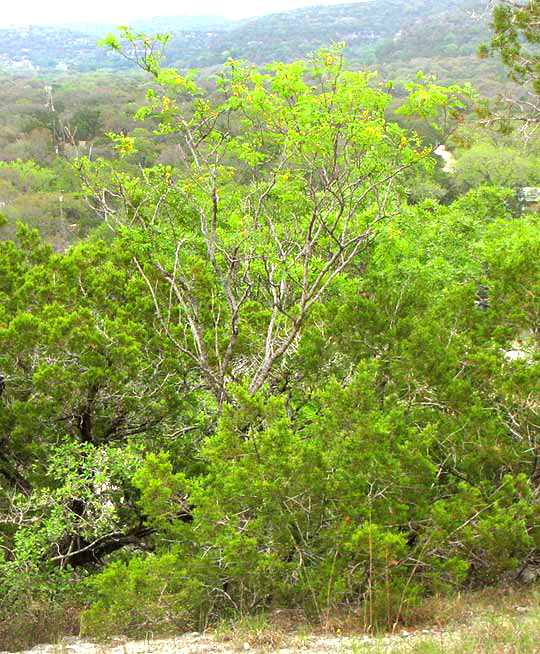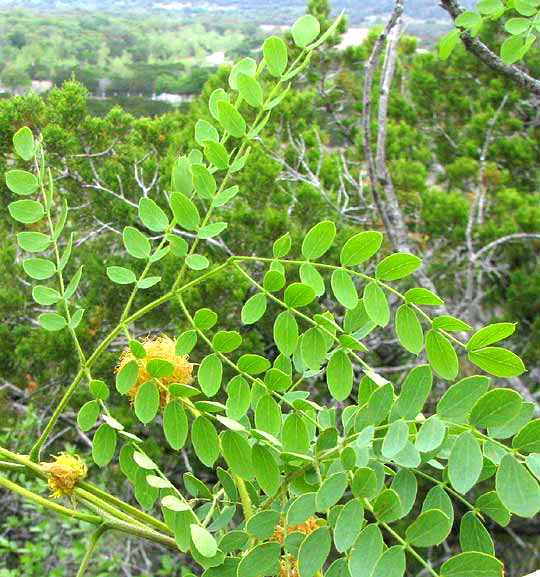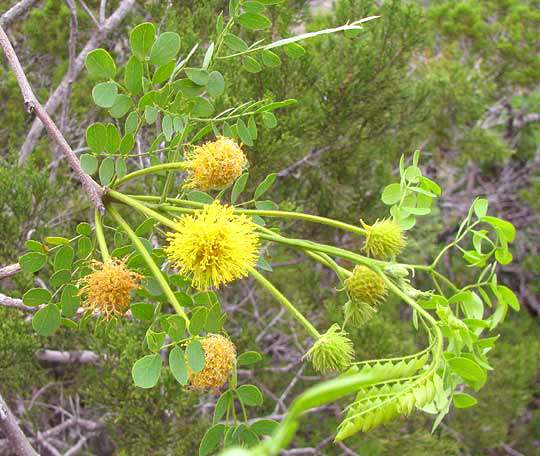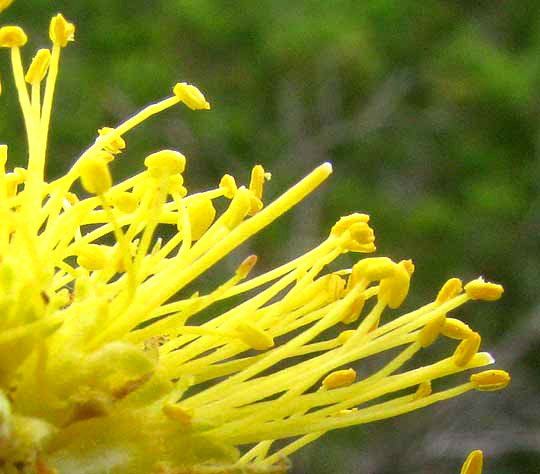Excerpts from Jim Conrad's
Naturalist Newsletter
from the April 28, 2013 Newsletter issued from the Frio Canyon Nature Education Center in northern Uvalde County, southwestern Texas, on the southern border of the Edwards Plateau; elevation ~1750m (~5750 ft); N29.62°, W99.86°; USA
GOLDENBALL LEADTREE
At the edges of limestone cliffs overlooking the Dry Frio River Valley sometimes you find intricately branching, somewhat open trees about ten feet tall (3m), which nowadays are issuing both leaves and flowers, as shown below:

The trees' large leaves are twice compound, like the North's Honeylocusts, as shown below:

The yellowish flowers are arranged in fuzzy, spherical heads, as shown below:

By now we know that the heads' fuzziness is produced by stamens extending well beyond the close-packed flowers' corollas. A close-up showing individual flowers with ten stamens arising from yellow corollas, the stamens and styles themselves lemon yellow, appears below:

This is a typical combination of field marks for trees and shrubs in our arid zone -- ferny, twice-compound leaves, tiny, sweet-smelling flowers closely packed in spherical or elongate heads atop a sturdy peduncle, and numerous stamens issuing from the individual corollas. These features help us recognize the Mimosa subsection of the vast Bean Family, so here we're dealing with a tree related to the acacias, locusts, mimosas, albizias, and other such trees belonging to the same Bean Family "tribe." We know it's not another acacia because its flowers produce only ten stamens each.
This pretty little tree goes by several names, including Goldenball Leadtree, Littleleaf Leadtree, Wahoo Tree and Lemonball. It's LEUCAENA RETUSA, endemic to arid northeastern Mexico, a few counties in southwestern Texas, and the southeastern corner of New Mexico. It specializes in rocky, limestone areas and dry canyons
And this is yet another attractive, pollinator-attracting native species with enormous potential for growing in rock gardens and use in xeriscaping in general. Its open form invites plantings of shorter plants below it.